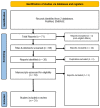Methods of Sentinel Lymph Node Detection and Management in Urinary Bladder Cancer-A Narrative Review
- PMID: 35323314
- PMCID: PMC8947662
- DOI: 10.3390/curroncol29030114
Methods of Sentinel Lymph Node Detection and Management in Urinary Bladder Cancer-A Narrative Review
Abstract
Introduction: Detection of lymph node status in bladder cancer significantly impacts clinical decisions regarding its management. There is a wide range of detection modalities for this task, including lymphoscintigraphy, computed tomography, magnetic resonance imaging, single-photon emission computed tomography, positron emission tomography, and fluoroscopy. We aimed to study the pre- and intraoperative detection modalities of sentinel lymph nodes in urinary bladder cancer.
Method: This narrative review was performed by searching the PubMed and EMBASE libraries using the following search terms: ("Transitional cell carcinoma of the bladder" OR "urothelial cancer" OR "urinary bladder cancer" OR "bladder cancer") AND (("sentinel lymph node") OR ("lymphatic mapping") OR ("lymphoscintigraphy") OR ("lymphangiography") OR ("lymph node metastases")). Studies analysing the effectiveness and outcomes of sentinel lymph node detection in bladder cancer were included, while non-English language, duplicates, and non-article studies were excluded. After analysing the libraries and a further manual search of bibliographies, 31 studies were included in this paper. We followed the RAMESES publication standard for narrative reviews to produce this paper.
Results: Of the 31 studies included, 7 studies included multiple detection methods; 5 studies included lymphoscintigraphy; 5 studies included computed tomography and/or single-photon emission computed tomography; 5 studies included fluoroscopy; 4 studies included magnetic resonance imaging; and 5 studies included positron emission tomography.
Discussion: Anatomical, radioactive, and functional detection modalities have been studied independently and in combination. The consensus is that preoperative detection with imaging helps guide surgical management and intraoperative detection methods help capture any lymph nodes that may have been missed. Each of these types of detection represent their own set of benefits and drawbacks, but there is currently limited evidence to support any change in overall practice to replace conventional staging.
Keywords: PLND; bladder cancer; detection; imaging; sentinel lymph nodes.
Conflict of interest statement
The authors declare no conflict of interest.
Figures
References
Publication types
MeSH terms
LinkOut - more resources
Full Text Sources
Medical


